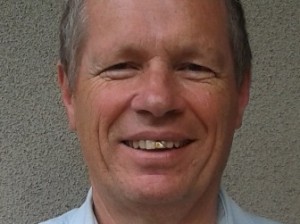Reckoning Risk
by Keith Rankin
It has been instructive to reflect on the loss of TE901 on Mt Erebus, 25 years ago on Sunday.
We were indeed fortunate that this accident was subjected to two separate investigations: the Royal Commission headed by the late Justice Sir Peter Mahon, and the report by air accident investigator Ron Chippindale.
Justice Mahon concluded that the principal cause of the crash was systemic failure within Air New Zealand. While noting the central importance of his findings, we should not necessarily reject the alternative finding of Mr Chippindale, who found the pilot (Jim Collins) culpable for flying too low when he was not certain where he was.
It is clear from the cockpit transcripts that at least some on the flight deck knew that they did not know where they were. It was therefore a substantial error of judgement that the pilot did not immediately climb his aircraft to a safe altitude at the moment in which the doubt was first raised.
The issues facing TE901 have much in common with the recent Air Adventures crash near Christchurch (for which an inquest is currently under way), and also the 1995 Ansett flight near Palmerston North, for which the pilot faced prosecution.
Some of the same issues also applied to the loss of the Columbia space shuttle early last year. And the same issues again are clearly expressed in the road safety advertisement that poses the question of speeding drivers: "Would you kill your family?"
Captain Collins was faced with the need to make a decision: to climb his aircraft to a safe height, or to continue as he was. By vacillating, he effectively made the latter choice.
The kind of decision he had to make is a mathematical one, a reckoning of acceptable versus unacceptable risk. Three pieces of numerical information were required.
First, Collins needed to have some idea of the cost of crashing his aircraft. Maybe the cost was one billion dollars? The important thing is not that the number is accurate, but to acknowledge is that there is such a number and that it is a very large number.
The second information is the cost of switching to a safe altitude. The main cost here would be the loss of anticipated scenic enjoyment. With 230 passengers each suffering just over $200 lost enjoyment, we get a total cost of $50,000. Jim Collins was sensitive to the expectations of his passengers.
The third figure is an estimate of the probability (or risk) of hitting Mt Erebus. The expected cost of continuing on the path that he was on can be calculated as the cost of hitting the mountain times the probability of hitting it. (This is what mathematicians call an expected value calculation, and we all do them every day, in our subconscious minds.)
If the assessed probability was one in a million (as it might have been if the pilot had clear visibility) then, given the billion dollar cost of a crash, the cost of the decision to continue on his current course was $1000. $1000 is less than $50,000, so a decision to continue at low altitude would have been an acceptable risk.
However, if the assessed probability of a crash was one in a thousand, then the expected cost of staying on current course would have been one million dollars, much more than the $50,000 cost of climbing to safety.
When Jim Collins first became aware that he was not aware of his exact position relative to Ross Island, his training should have led to an instant reappraisal of the chance of hitting the mountain. He should have acted immediately he realised the risk he was taking had become unacceptable.
Has there been a culture of underestimating risk in the aviation industry? A 999-per-1000 likelihood of not crashing seems like good odds. In reality, it is a variation of Russian roulette. Given the number of air accidents which have happened but which would have been averted if the pilots had made a more appropriate assessment of the risk, I believe that such a culture has existed.
Car drivers probably underestimate risk more frequently than pilots. That's why it is safer to travel by aeroplane than by car.
Learning the processes behind the reckoning (and misreckoning) of risk should not be confined to the training of pilots and stockbrokers. It is as important a part of our education as learning to read and write.
© 2004
Keith Rankin
keithr@pl.net
http://pl.net/~keithr/



 Eugene Doyle: Writing In The Time Of Genocide
Eugene Doyle: Writing In The Time Of Genocide Gordon Campbell: On Wealth Taxes And Capital Flight
Gordon Campbell: On Wealth Taxes And Capital Flight Ian Powell: Why New Zealand Should Recognise Palestine
Ian Powell: Why New Zealand Should Recognise Palestine Binoy Kampmark: Squabbling Siblings - India, Pakistan And Operation Sindoor
Binoy Kampmark: Squabbling Siblings - India, Pakistan And Operation Sindoor Gordon Campbell: On Budget 2025
Gordon Campbell: On Budget 2025 Keith Rankin: Using Cuba 1962 To Explain Trump's Brinkmanship
Keith Rankin: Using Cuba 1962 To Explain Trump's Brinkmanship